Blog
April 28, 2023
It all started with Twitter/X’s notification that it is cutting off free access to its developer API. There were a lot of articles on the implications this would have on developers. This would mean developers who use the API to build, modify, or test applications would be charged for using the API.
This is a common scenario that developers and testers run into at various organizations. Third party APIs and environments are often expensive to use. Companies are either charged per transaction against the API or are charged with test environment setup. This is a constraint that can affect the development or testing cycles.
Such dependencies could cause a lot of trouble during testing as they may not be easily available when you need them, or in this case have constraints like costs or limited control over data it returns – and all of that typically leads to unwanted trade-offs during the testing.
Eliminating constraints like this is exactly what mock services do. In this blog post, you will learn how to replicate the Twitter/X API with BlazeMeter.
Table of Contents
What Are Mock Services?
Mock Services emulate the real behavior of a service including response times, response data etc. This makes them an ideal replacement for real services in scenarios where there are constraints with their availability, data, or usage.
Creating Mock Services is as simple as taking an existing specification files like swagger, wsdl etc., or using existing request / response pair files, har file or wiremock definition files and dropping them or uploading them in the mock services screen. This will then create transactions.
A transaction is basically a collection of a request and its corresponding response along with matching logic. In addition, transactions also let users configure some other optional dynamic behavior. In addition, mock services can also reference data parameters from service data entities that can contain test data from sources such as CSV files (containing existing test data) or synthetic data parameters. More information at the link and a blog post describing this capability in detail here.
Back to topReplicating Twitter/X API
With that understanding of mock services, lets dive into creating mock services for Twitter/X API v2. With a developer account, we get access to the v2 OpenAPI specification. This API specification can then be saved as JSON specification file, which can then be imported to create some transactions as shown below.

Then you will open Twitter/X API v2 Specification file.
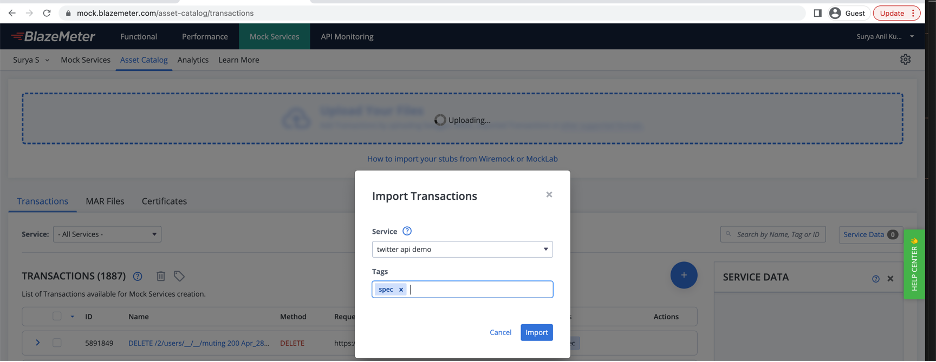
Next step is to import the spec file to create transactions.
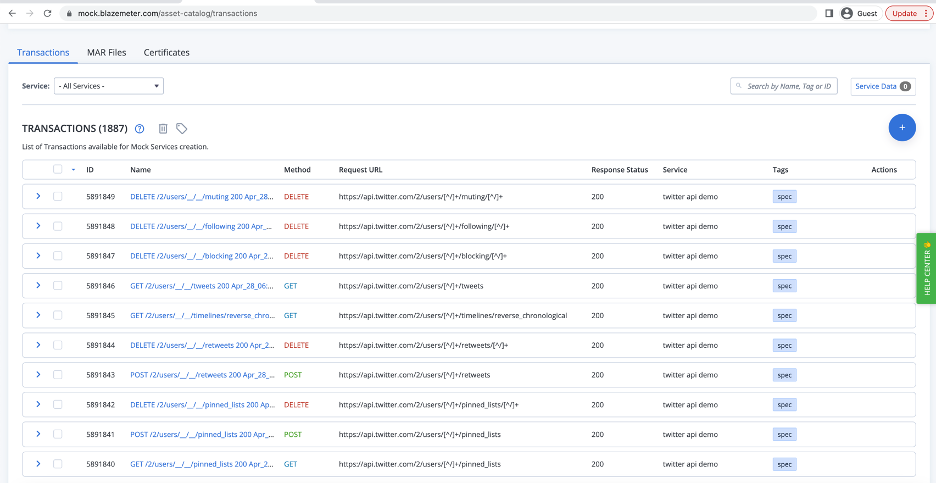
If we examine the transactions that get created, they are created for different combinations such as different response codes and responses defined for the operations. For example, in case of the User By ID call, 200 Success - User Not Found, 429 Rate Limit Exceeded, 200 Success - Default Payload, 200 Success - Request Fields for User and Expanded Pinned Tweet, etc. The transactions created will have the default responses based on the example data in the specification file as shown below.
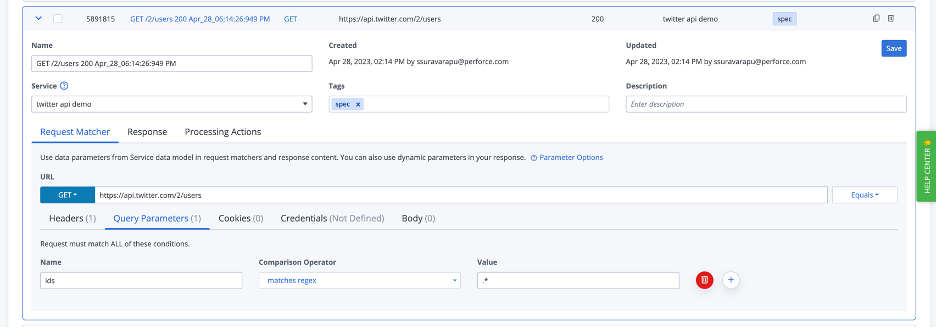
Next, we will have the request created from specification.
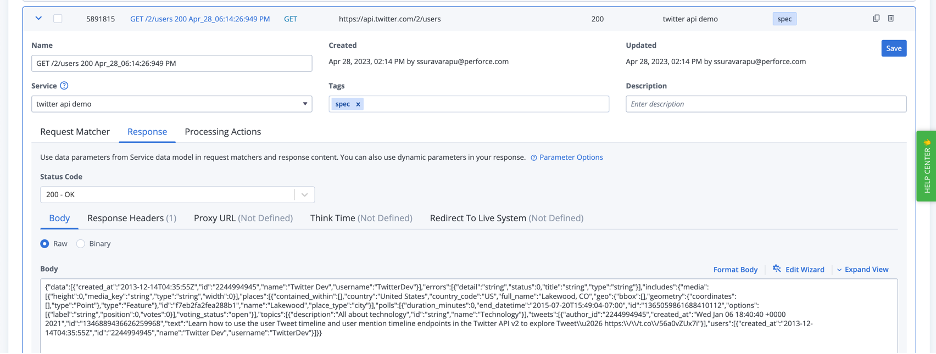
Once the transactions have been created, a mock service can be created by adding the required transactions and users can optionally make changes to transactions such as changes to request or response, creating clones of transactions to add additional scenarios etc. Once the service is started, it will generate an endpoint as shown in the below image. After this, the mock service can be validated by sending a sample request as shown.
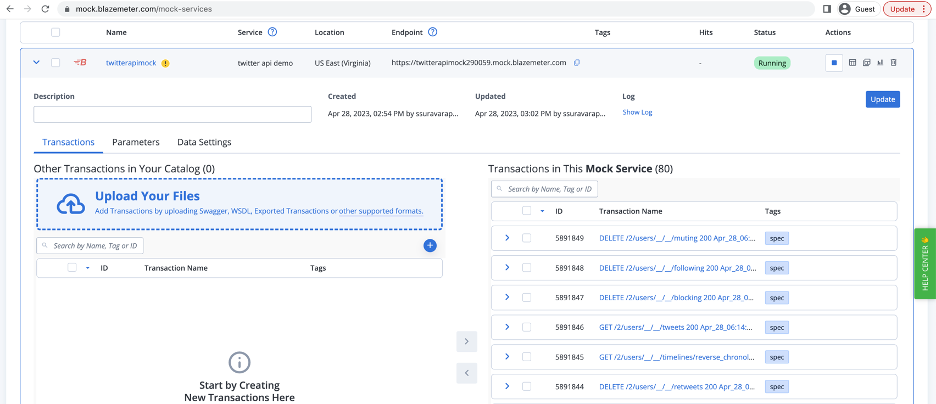
Finally, we will validate the mock service by sending a request as seen below.

This is an example flow that illustrates creating a mock service for Twitter/X API. Once done, users can add different data scenarios and response scenarios with different response codes, response times etc. for validating and running tests as needed. This way, users of mock services can eliminate constraints associated with the costs associated and create as many mock services as needed to meet their testing needs.
Back to topBottom Line
With all the recent changes to Twitter/X, it can be hard for developers to know how best to operate around the Twitter/X API. Yet with BlazeMeter Mock Services, teams can rest assured that they are properly replicating the Twitter/X API to execute the tests they need.
Ready to get started with BlazeMeter?
